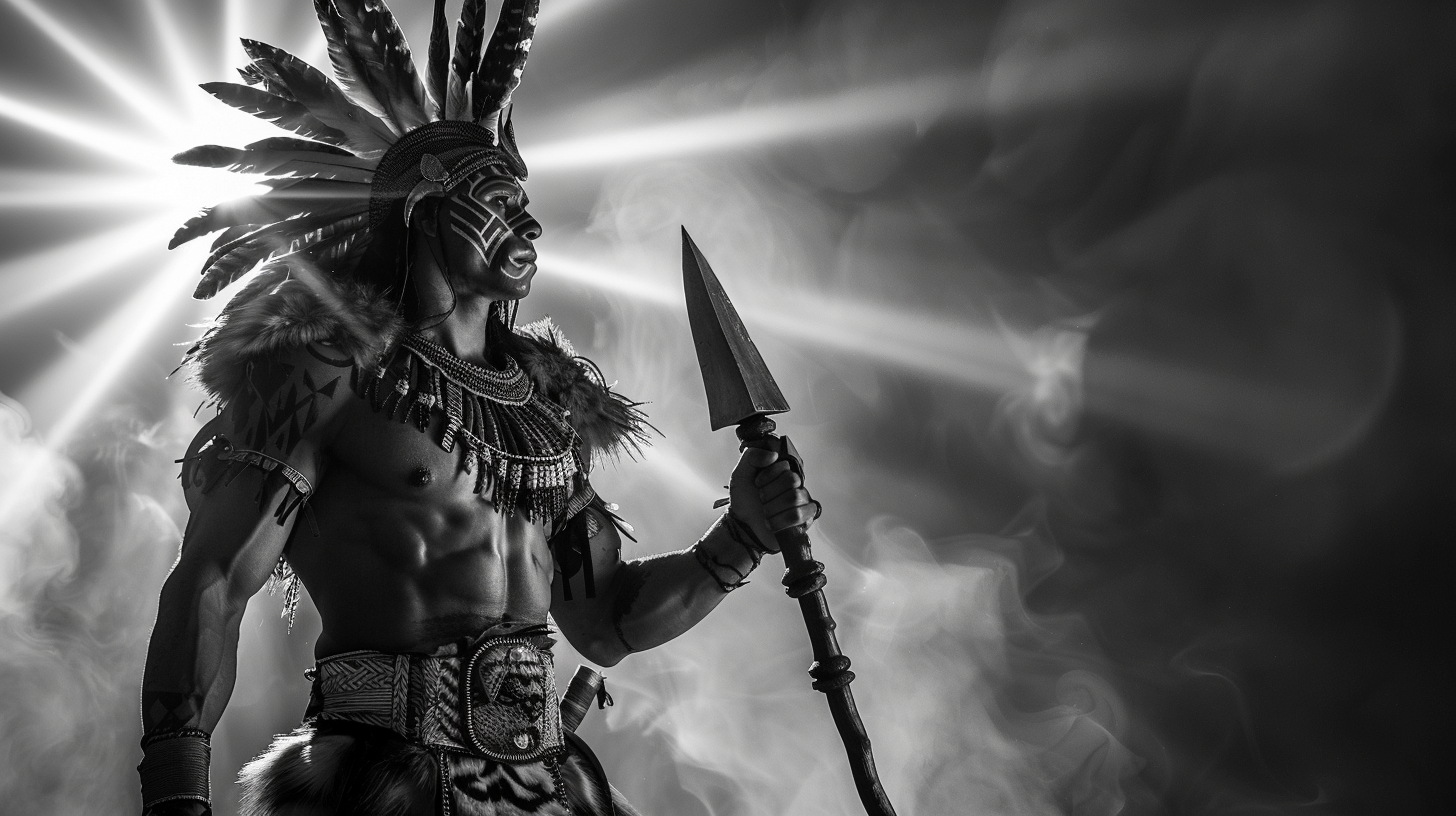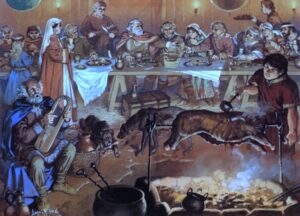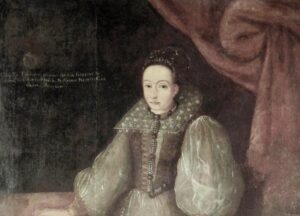
Discover how Viking marriages balanced power, respect, and love—where women ruled farms, wrote laws, and viking men returned home by choice.
The Woman Who Ruled in the Absence of Viking Men
Around 950 CE, a Viking farmer climbed into his ship and sailed away. His wife took the iron keys from their farmhouse and became the law of the land. For months or years, she managed everything: livestock, servants, disputes, taxes. When traders came, they negotiated with her. When conflicts arose between viking men, she judged them.
This was not exceptional. It was the rule.
The Architecture of Partnership
Viking society was brutal, but pragmatism forced a kind of equality. A man needed his wife to be formidable. No shrinking violets were required.
Archaeology proves it. Women were buried with keys—symbols of household authority—just as men were buried with swords. His tool defended the family.
Her tool fed and organised it. Both were weapons. Both were respected.
When a man left, his wife became the master of the household. She could buy and sell land, conduct legal proceedings, and oversee trade. Her authority wasn’t borrowed; it was hers by law.
In medieval Europe, a woman’s property belonged to her husband. Viking women could own land separately, manage wealth independently, and—crucially—leave.

Marriage: When Love and Survival Lived Together
Most Viking marriages were arranged for alliance and property. Love was a luxury that might arrive later.
But the sagas preserve something tender. A husband is calling his wife fríðr mín—”my beloved.” A widow keeps her husband’s sword beside her bed for life. Verses where men describe missing their wives with an ache that feels achingly familiar.
This wasn’t sentiment softening pragmatism. It was both things at once. A Viking man could arrange a marriage for political reasons and genuinely grieve when his wife died.
And here’s what separated Viking culture: a woman could leave. If a marriage wasn’t working, she needed witnesses and a formal declaration. Her dowry was returned. Then she could walk away and remarry freely. In 10th-century Scandinavia, that autonomy was revolutionary. Elsewhere in Europe, it was unthinkable.
The Darkness Underneath
This was not a society of enlightened equals. The sagas overflow with abduction, with women taken as spoils of war, with forced unions and brutality.
Yet even here, the culture had limits. A man who abused a wife, particularly one of good family, could be shamed, fined, or outlawed. An honourable man didn’t beat his wife. That was cowardice. A Viking male did not want to be seen as a coward.
And some women didn’t accept victimhood. Shieldmaidens took up axes. Wives poisoned their husbands’ drinks. One woman burned down her husband’s hall while he slept inside because his ambition had become intolerable. The sagas were preserved because their society found them worthy of remembrance.

What He Actually Wanted
To a Viking man, the ideal woman wasn’t meek or decorative. She was formidable, loyal, intelligent, and unafraid to speak her mind.
The sagas are complete with wives goading husbands into action. A man hesitates before a raid, and his wife mocks him into courage. A husband considers backing down from a blood feud, and his wife shames him into action. These are scenes of equals arguing, challenging each other, pushing back.
A woman’s sharp tongue could start a blood feud that lasted generations. But it could also earn her a place in the sagas—the closest thing to immortality a Viking could imagine.
Gain some psychological insight into why we find the Vikings so exciting by checking out this post on our Substack!
What Survived the Cold
They didn’t write love letters. That required leisure. Courts. Distance. Viking poets were too busy for that. They wrote about war. Glory. Vengeance. The certainty of death.
But the sagas preserve evidence of something else: love poems and erotic verse called mansöngr, composed occasionally by skalds. Hallfreðr vandræðaskáld, a 10th-century poet, composed verses expressing longing and affection, intertwining themes of yearning love and rivalry.
In Hallfreðar saga vandræðaskálds, Hallfreðr — known as “the Troublesome Poet” — confessed his torment in verse:
“I cannot hide my love; her eyes burn brighter than battle’s fire.”
Why This Matters
We’re fascinated by Vikings because they’re violent and distant. But we should notice what they got right: a partnership requires both people to be strong. Respect matters more than control. A woman who can walk away is a woman you have to actually keep.
The Viking age didn’t invent equality. It was still a world of raids and slavery, of power in the hands of warriors. But in their domestic arrangements—in a woman’s authority over a farm, her legal right to divorce and remarry—they stumbled onto something much of Europe would take a thousand years to recover.
In the firelit halls, when the sea winds howled outside, Viking men and women lived by the same code: strength and loyalty first, love as the reward for endurance.
That’s a different kind of romance than we’re used to. But it’s real. And it’s why, when we think of Vikings, we might remember not just the raids—but the people waiting at home, and the people who chose to come back to them.
Sources & Further Reading
Historical and archaeological details are based on works by Judith Jesch (Women in the Viking Age), Jenny Jochens (Women in Old Norse Society), Neil Price (Children of Ash and Elm), and Anders Winroth (The Age of the Vikings).
Love poetry and mansöngr references are drawn from Hallfreðar saga vandræðaskálds, Kormáks saga, and Margaret Clunies Ross (Old Norse Poetry).







